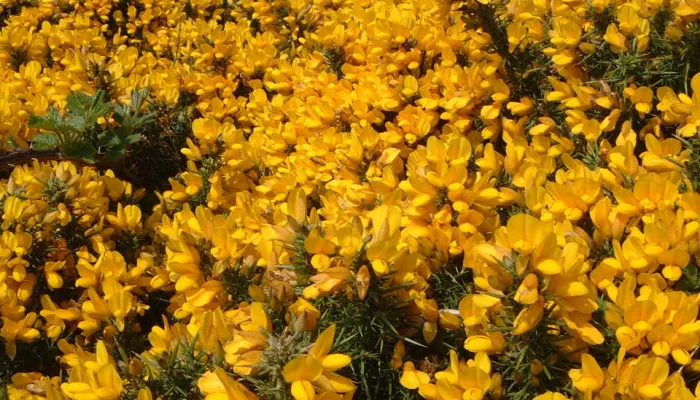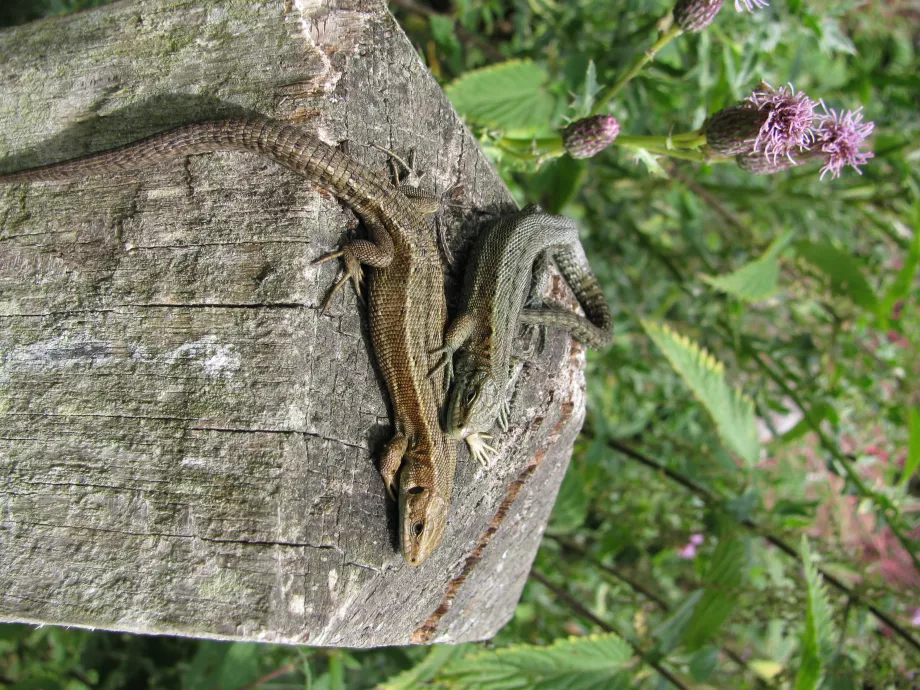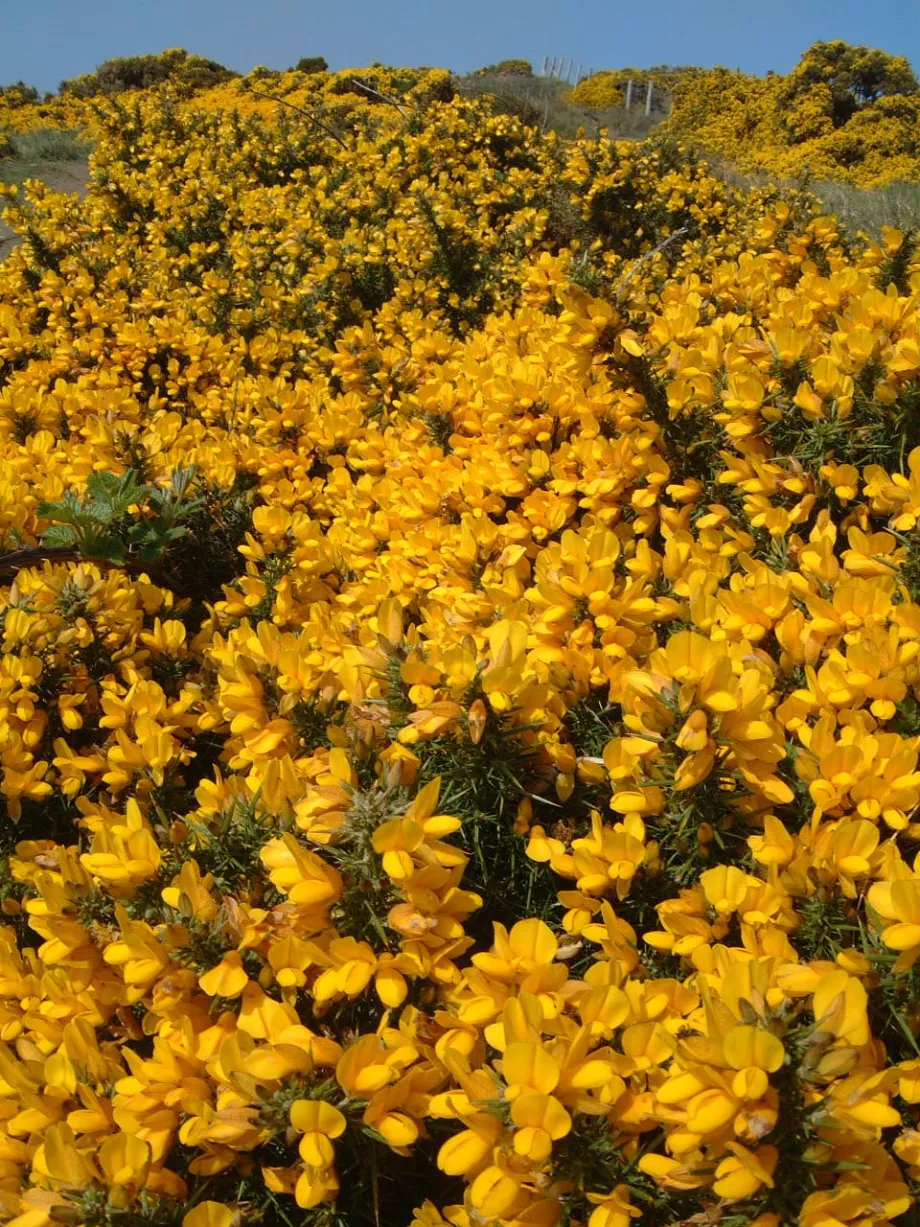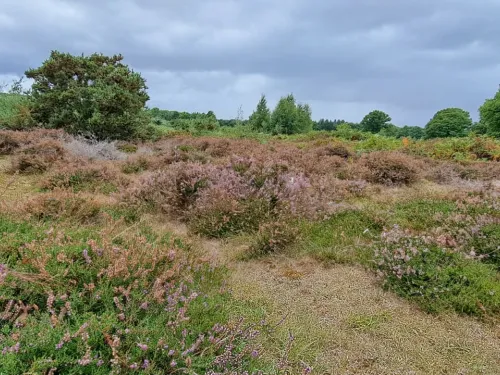
Meet the enchanting heath fritillary butterfly
This rare butterfly relies on wild woodlands - learn more & support its future.


Common Lizard. Photograph by Ian Rickards
The gorse now in bloom is Ulex europaeus, common gorse. The dense, intensely spiky shrub provides essential perches and nesting cover for birds and year-long shelter for animals and insects. The coconut-scented flowers that open in any mild spell through winter into spring are an important source of nectar and pollen for insects.
We are lucky to also have colonies of Ulex minor, dwarf gorse or furze, on the heathland. It grows in smaller mounds, is slightly less spiky, and flowers in summer when common gorse is in seed. Both species scatter their seed widely by dehiscence – in hot sun, areas of the black woody pea-pods expand in different ways causing the two sides to twist as they split open with an audible pop and throw the seeds some distance. Not the loud crack of castor-oil seed cases exploding perhaps, but nonetheless a popping gorse bush is quite something to hear. Western gorse, Ulex galii, the third species that occurs in Britain, doesn’t grow in this region. The thorns on all these species are modified leaves, enabling the plants to survive in arid or wind-swept conditions and photosynthesize all year.

Gorse. Gorse
Fungi might be called ‘primitive’ plants but are all fine-tuned to the conditions of their habitats, and all occupy a particular niche in their food chain. With no chlorophyll to make food through photosynthesis, it’s the permanent and large underground network of mycelia (the thread-like part of the fungus) that make food - energy - by breaking down living or dead organic matter. This is a vital part of the natural process of decay and regeneration.
Do take away photos and memories, but please leave all the fungi for others to enjoy and for the organisms exclusively dependent on fungi for food and habitat. Area Manager, Ian Rickards, reports that the Oyster fungi beetle is severely threatened, primarily due to its food source (oyster fungi) being over collected. That affects whatever feeds on the oyster fungi beetle higher up the food chain, and so on. Everything is interlinked. Leaving them alone also avoids the dilemma of which are edible and which poisonous. Instead, have fun trying a grow-your-own kit.
A note from Area Manager, Ian Rickards:
Everyone is welcome to visit Hothfield Heathlands but please remember this is first and foremost a haven for wildlife.
Please keep dogs close to you at all times, and do not let your dog run and play off the paths and through the areas of heather and gorse. Breeding and feeding birds are seriously impacted by this disturbance, causing them to abandon nests or preventing them from collecting the food they need.
Make sure anything you bring with you leaves the reserve with you. Remove litter, dog mess and place all dog bags in the bins.
Hothfield Heathlands is one of the best spots for wildlife in the county, with your help we can keep it that way.
For more information visit our Hothfield Heathlands nature reserve page.

This rare butterfly relies on wild woodlands - learn more & support its future.

Long-time volunteer Margery Thomas explores what Hothfield Heathlands is like on a crisp November day.

Area Manager, Ian Rickards, takes a moment to reflect on the work at Hothfield Heathlads throughout the summer months.